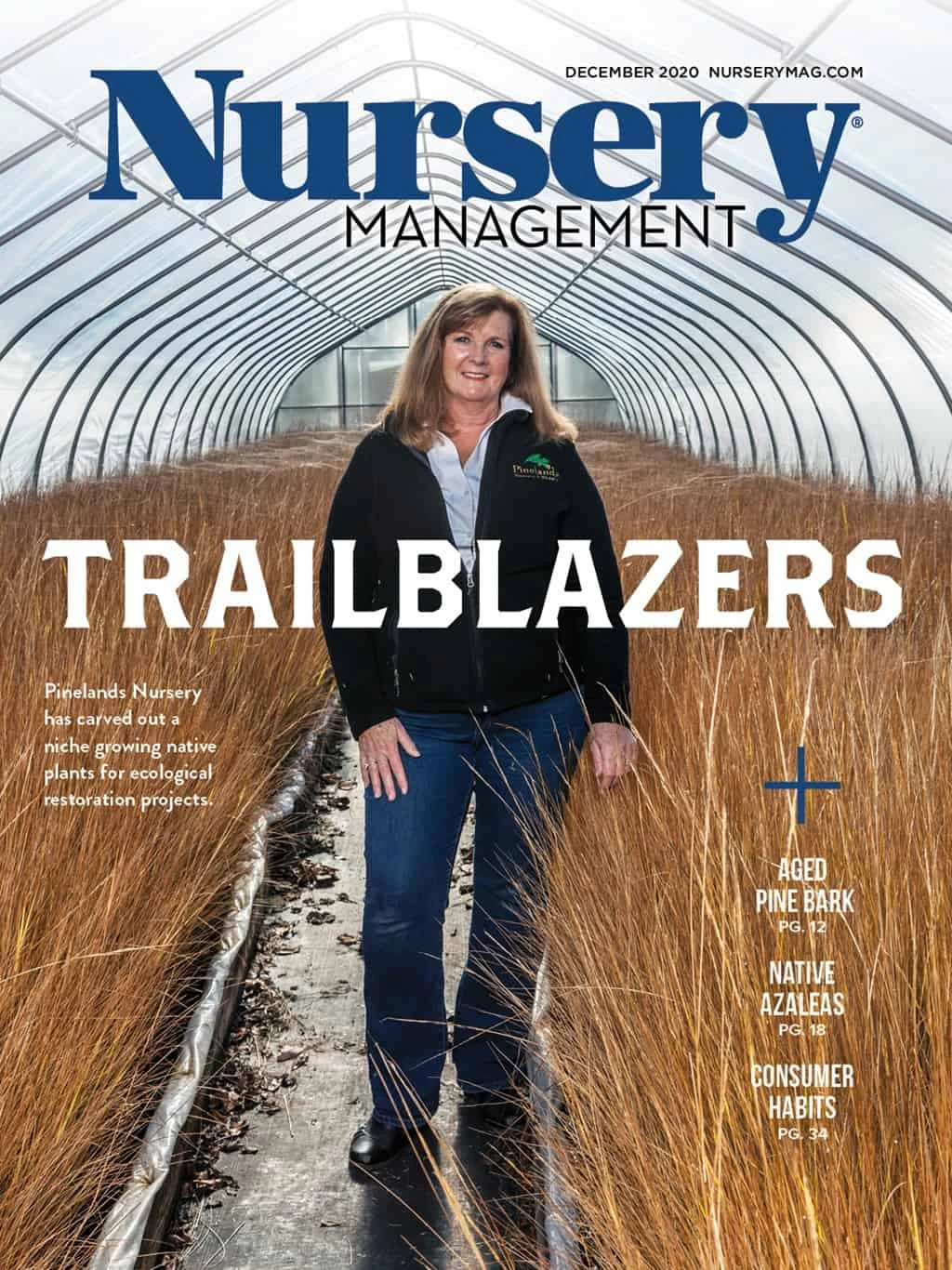

Grasses are great sustainable landscape plants. But they can be a tough sell in spring at a garden center without showy flowers and simply a green tuft in that gallon pot. The University of Minnesota Extension created marketing materials designed to help consumers know what they are buying, how grasses benefit native butterflies and how they require few inputs such as water or fertilizer. These marketing materials, developed with a grant from the Minnesota Department of Agriculture and the USDA’s Specialty Crop program, can help growers and their independent garden center customer sell more grasses.
Stores in Minnesota increased their grass sales by displaying the 22-inch by 28-inch Benefits of Native Grasses point-of-purchase sign that accompanied easy-to-propagate native grasses such as Sorghastrum nutans (Indian grass) and Panicum virgatum (switchgrass), along with native sedges such as Carex pensylvanica and Carex grayi.
Stores also increased the number of cultivars of grasses sold adding Bouteloua gracilis ‘Blonde Ambition’ (blue grama) and Panicum virgatum ‘Northwind’. Using the sign and endcap displays of the grasses with other native plants helped customers see grasses as good choices for pollinators.
_fmt.png)
Colorful labels that highlight the benefits of native grasses were also developed. Minnesota has a complicated pollinator label law, so two labels were developed — one showing butterflies and one without butterflies (for any plants that may have been grown using neonic pesticides). MasterTag made labels in two sizes, a smaller 1.7-inch by 5.25-inch stick tag and a larger 3-inch by 7.65-inch hang tag.

University of Minnesota
Additional educational materials include a two-page Native Grass Guide that can be printed and attached to the store sign or poster.
The most comprehensive educational piece is the free 72-page e-book, “Gardening with Native Grasses in Cold Climates.” Available online, it has five chapters showing not only the benefits of native grasses, but how gardeners can use these plants in the landscape.
Did you know that native grasses support over 30 species of native Lepidoptera as host plants for their small and often unnoticed caterpillars? We also created “A Native Prairie Graminoid Host Plants of Minnesota and Associated Lepidoptera: Literature Review” along with a 11-inch by 17-inch native grass poster showing the grasses and the butterflies these tough native plants support.

Explore the December 2020 Issue
Check out more from this issue and find your next story to read.
Latest from Nursery Management
- John Ruter shares UGA's latest woody and herbaceous ornamental plant breeding projects
- Conor Foy joins EHR's national sales team
- Pantone announces its 2026 Color of the Year
- Syngenta granted federal registration for Trefinti nematicide/fungicide in ornamental market
- Get to know Kayela Aeppli
- HILA 2025 video highlights: John Gaydos of Proven Winners
- Q&A with Justin Bartlett
- Be the best choice





